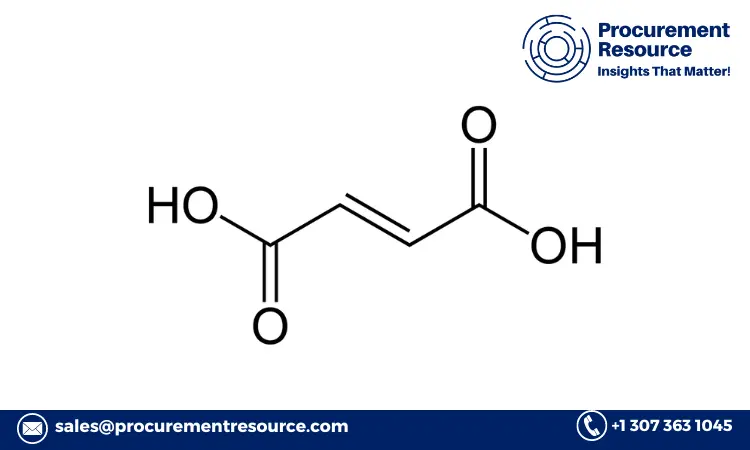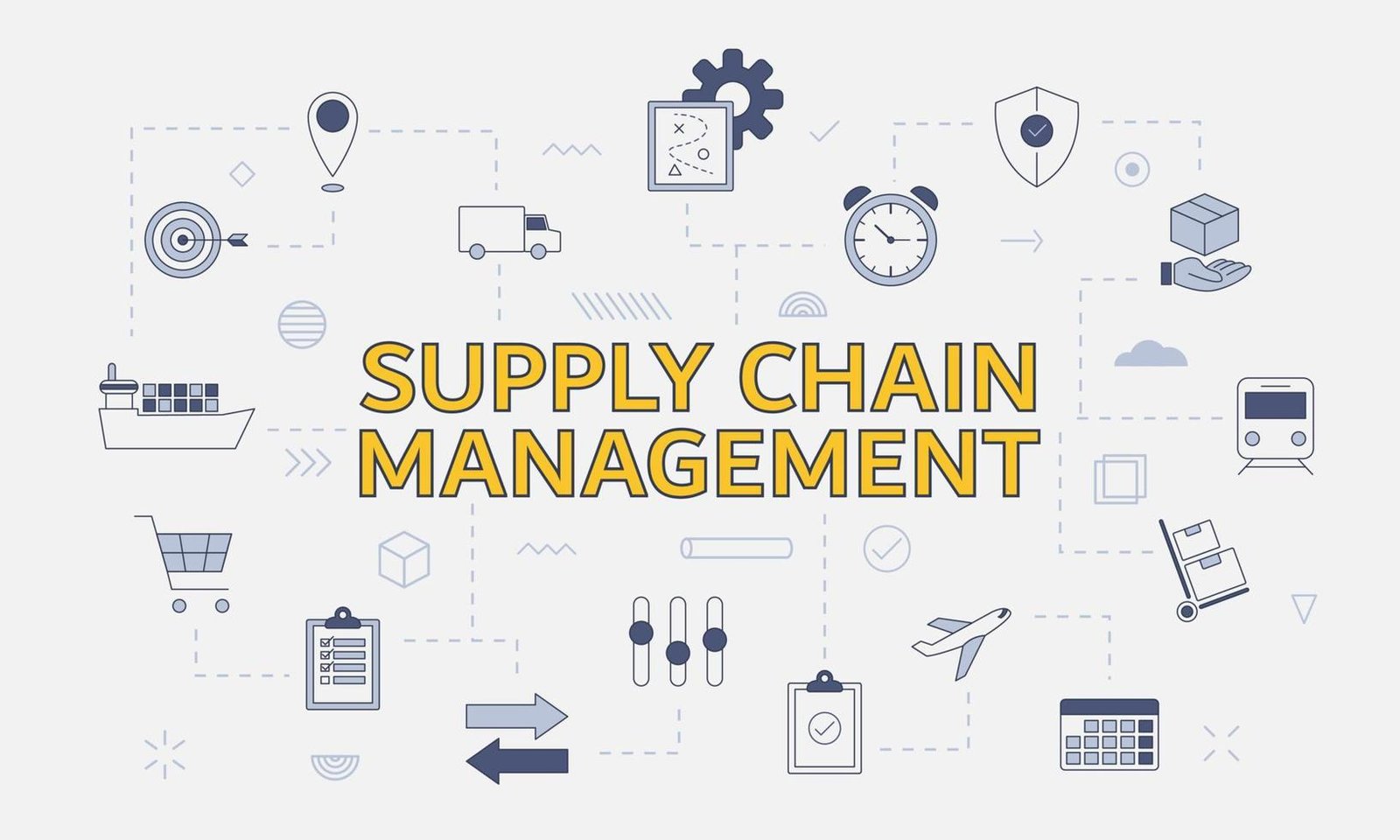Fumaric acid is a versatile organic acid with widespread applications in the food, beverage, and pharmaceutical industries, as well as in industrial manufacturing. With its use as a food additive, acidity regulator, and intermediate in various chemical processes, the demand for fumaric acid remains robust. As a result, understanding the fumaric acid price trend is crucial for manufacturers, investors, and stakeholders in these sectors. This comprehensive report explores the fumaric acid price trend, covering price analysis, insights from price charts, updates from recent news, the fumaric acid price index, and graphical representations of price patterns.
Request Free Sample – https://www.procurementresource.com/resource-center/fumaric-acid-price-trends/pricerequest
Understanding the Fumaric Acid Price Trend
The fumaric acid price trend has seen fluctuations over recent years due to multiple factors, including raw material costs, shifts in demand, production capacities, and regulatory changes. As of 2024, these factors continue to shape the pricing trajectory of fumaric acid, making it essential for industry participants to stay informed about market trends.
Key Factors Influencing Fumaric Acid Prices:
- Demand in Food and Beverage Applications: Fumaric acid is widely used as a food additive and acidity regulator, which keeps demand high in the food and beverage sector. Demand for processed foods and beverages, in particular, drives up the need for fumaric acid, affecting its price trend.
- Raw Material Costs: Fumaric acid production typically relies on feedstocks like maleic anhydride, which is derived from petrochemical processes. Therefore, fluctuations in crude oil prices impact raw material costs and, consequently, fumaric acid prices.
- Supply Chain Challenges: Global supply chain disruptions can significantly affect the availability and price of fumaric acid. Factors such as transportation delays, labor shortages, and logistical issues often lead to price surges when supply is restricted.
- Environmental Regulations: Environmental regulations affecting chemical production and emissions can influence fumaric acid pricing. Compliance costs for manufacturers, including investments in cleaner technology, can raise production costs, which are often passed on to consumers in the form of higher prices.
Fumaric Acid Price Analysis
An in-depth fumaric acid price analysis provides insights into past pricing patterns, supply-demand balances, and factors impacting current and future pricing. This analysis enables stakeholders to understand how various influences shape the market for fumaric acid.
- Historical Price Trends: Over the past decade, fumaric acid prices have been impacted by economic cycles, production costs, and shifts in demand. For example, periods of economic growth often correlate with increased demand for processed foods and beverages, leading to higher prices. Conversely, economic downturns can reduce demand and lower prices.
- Supply and Demand Dynamics: Fumaric acid prices are highly sensitive to supply-demand dynamics. When demand outpaces supply, prices typically rise due to scarcity, and when supply exceeds demand, prices stabilize or decrease. For instance, an increase in demand from the food and beverage industry often pushes up prices as manufacturers seek to secure enough fumaric acid to meet production needs.
- Cost of Production Inputs: The cost of raw materials, energy, and labor directly influences fumaric acid prices. Rising costs of feedstocks like maleic anhydride and energy costs for production facilities impact overall pricing. Additionally, changes in the prices of related chemicals can affect the cost of producing fumaric acid.
- Geopolitical and Regulatory Influences: International trade policies and environmental regulations can impact fumaric acid prices. Trade tensions, tariffs on raw materials, and changes in environmental policies can lead to fluctuations in supply and affect the price trend for fumaric acid. For example, tariffs on imported maleic anhydride could increase production costs for fumaric acid manufacturers.
Fumaric Acid Price Chart
Price charts are invaluable tools that provide a visual representation of the fumaric acid price trend over time. They help stakeholders identify patterns, seasonal variations, and price shifts in response to market events, offering a comprehensive view of historical data to support decision-making.
- Monthly Price Variations: Fumaric acid price charts often reflect monthly changes, showing periods of price increases or decreases throughout the year. For instance, prices may rise in peak production seasons for the food industry or during periods of increased demand from industrial applications.
- Year-over-Year Comparisons: Year-over-year comparisons on price charts offer insights into how current prices align with historical trends. If prices have consistently risen over several years, this may indicate sustained demand growth or constraints in supply. Conversely, a decline may signal improved supply conditions or reduced demand.
- Impact of Market Events: Reviewing price charts helps stakeholders observe how specific market events influence fumaric acid prices. Events such as changes in raw material costs, regulatory announcements, or shifts in demand from end-use industries often create visible price movements on the chart.
- Forecasting Future Prices: Fumaric acid price charts, when used alongside predictive analytics, support forecasting of future price trends. Historical data and market projections provide a basis for predicting potential price movements, enabling better planning and investment decisions.
Fumaric Acid Price News
Keeping up with the latest fumaric acid price news is essential for understanding short-term price changes and anticipating future market shifts. Price news includes updates on production levels, supply chain conditions, regulatory changes, and demand from key industries.
- Supply Chain and Production Updates: News about production levels, such as facility expansions, shutdowns, or disruptions, can significantly affect fumaric acid prices. Additionally, reports on transportation issues, such as increased shipping costs, influence the price trend.
- Regulatory Developments: Changes in environmental and trade regulations can have a direct impact on the fumaric acid market. For example, stricter emissions controls for chemical manufacturing facilities may raise production costs, leading to price adjustments in response to increased compliance costs.
- Economic and Trade News: Fumaric acid prices are sensitive to global trade relations and economic conditions. News on tariffs, trade agreements, and forecasts for industries like food and beverage, pharmaceuticals, and industrial manufacturing can impact market pricing.
- Industry Demand Trends: Reports on demand for end products that use fumaric acid, such as food additives, dietary supplements, and polymer resins, influence price movements. For instance, increased demand from the food industry due to trends like plant-based diets can drive up prices as producers seek more fumaric acid for food applications.
Fumaric Acid Price Index
The fumaric acid price index is a valuable tool for tracking average price changes over time, providing a benchmark for evaluating long-term price trends and market stability. This index reflects both short-term and long-term pricing trends, offering insights into overall market conditions.
- Tracking Long-Term Trends: The fumaric acid price index helps stakeholders monitor long-term price movements, showing how prices evolve over time. A rising index indicates growing demand or constrained supply, while a stable or declining index suggests balanced market conditions.
- Regional Price Comparisons: The index often includes regional data, enabling comparisons across different markets. For example, prices may vary between North America, Europe, and Asia due to differences in production capacities, demand levels, and regulatory environments.
- Inflation-Adjusted Pricing: Adjusting for inflation provides a more accurate picture of real price changes versus general inflationary trends. This analysis helps stakeholders understand how much fumaric acid prices have increased due to actual market factors rather than inflation alone.
- Guiding Investment Decisions: By examining the fumaric acid price index, manufacturers, and investors can assess market conditions and potential future price trends. A consistent upward trend might encourage investment in production facilities or partnerships, while a volatile index may prompt caution among stakeholders.
Fumaric Acid Price Graph
Price graphs provide visual representations of pricing data, allowing for easy analysis of fumaric acid price patterns, seasonal trends, and responses to external events. Graphs are essential tools for stakeholders seeking data-driven insights into the market.
- Seasonal Price Patterns: Fumaric acid price graphs often reveal seasonal variations, with price increases during peak demand periods and decreases during slower seasons. These patterns are valuable for companies in industries like food and beverages that experience seasonal demand fluctuations.
- Comparing Historical Data: Price graphs enable stakeholders to compare current prices with historical data, making it easy to identify unusual movements. For example, if current prices are significantly higher than usual, this may indicate supply constraints or increased demand from key sectors.
- Market Reaction to Events: Graphs illustrate how prices respond to specific market events, such as regulatory changes, natural disasters, or economic shifts. Visualizing these responses helps stakeholders understand the relationship between market conditions and fumaric acid prices.
- Supporting Strategic Decisions: Fumaric acid price graphs provide a clear picture of market trends, helping companies make informed decisions on purchasing, production, and investment. For instance, observing a steady upward trend may prompt buyers to secure long-term contracts to lock in prices and mitigate future price increases.
Contact Us:
Company Name: Procurement Resource
Contact Person: Amanda Williams
Email: sales@procurementresource.com
Toll-Free Number: USA copyright – Phone no: +1 307 363 1045 | UK – Phone no: +44 7537171117 | Asia-Pacific (APAC) – Phone no: +91 1203185500
Address: 30 North Gould Street, Sheridan, WY 82801, USA












Leave a Reply